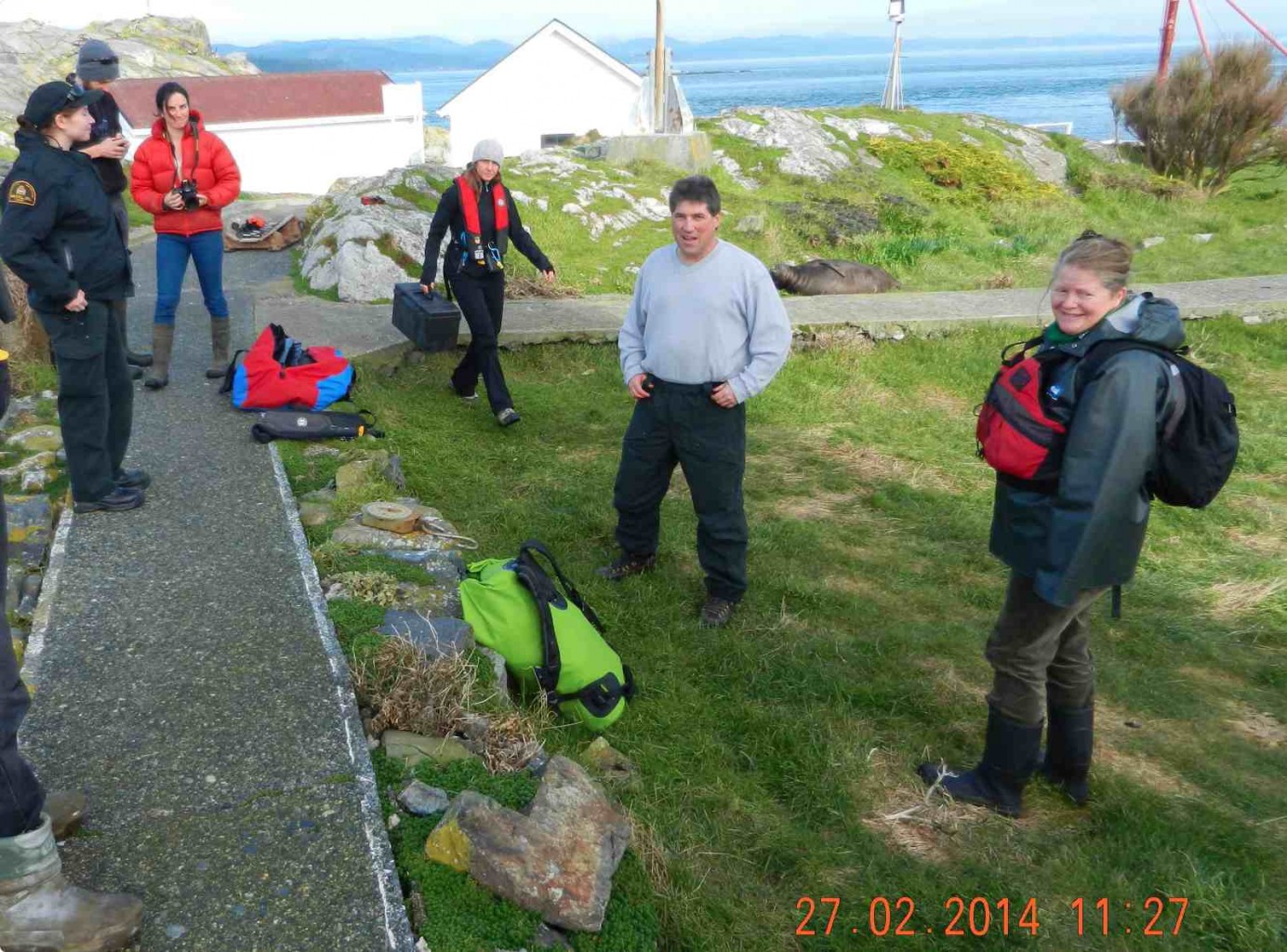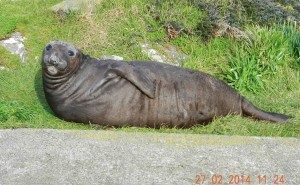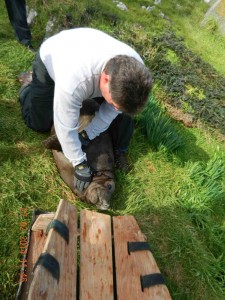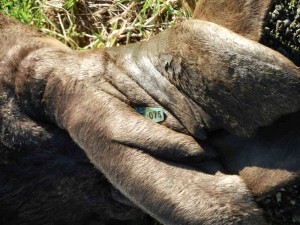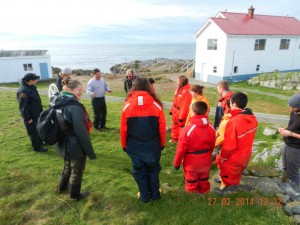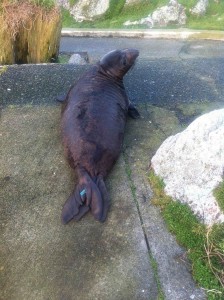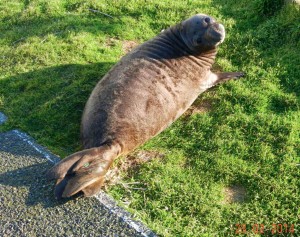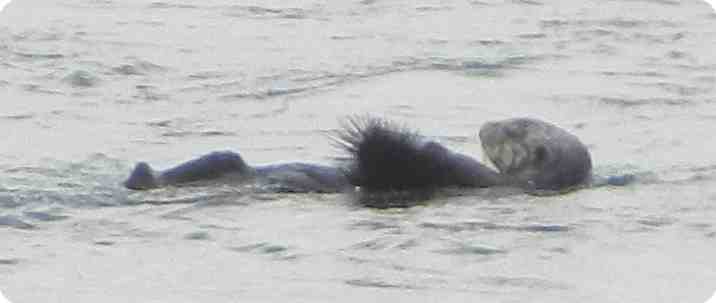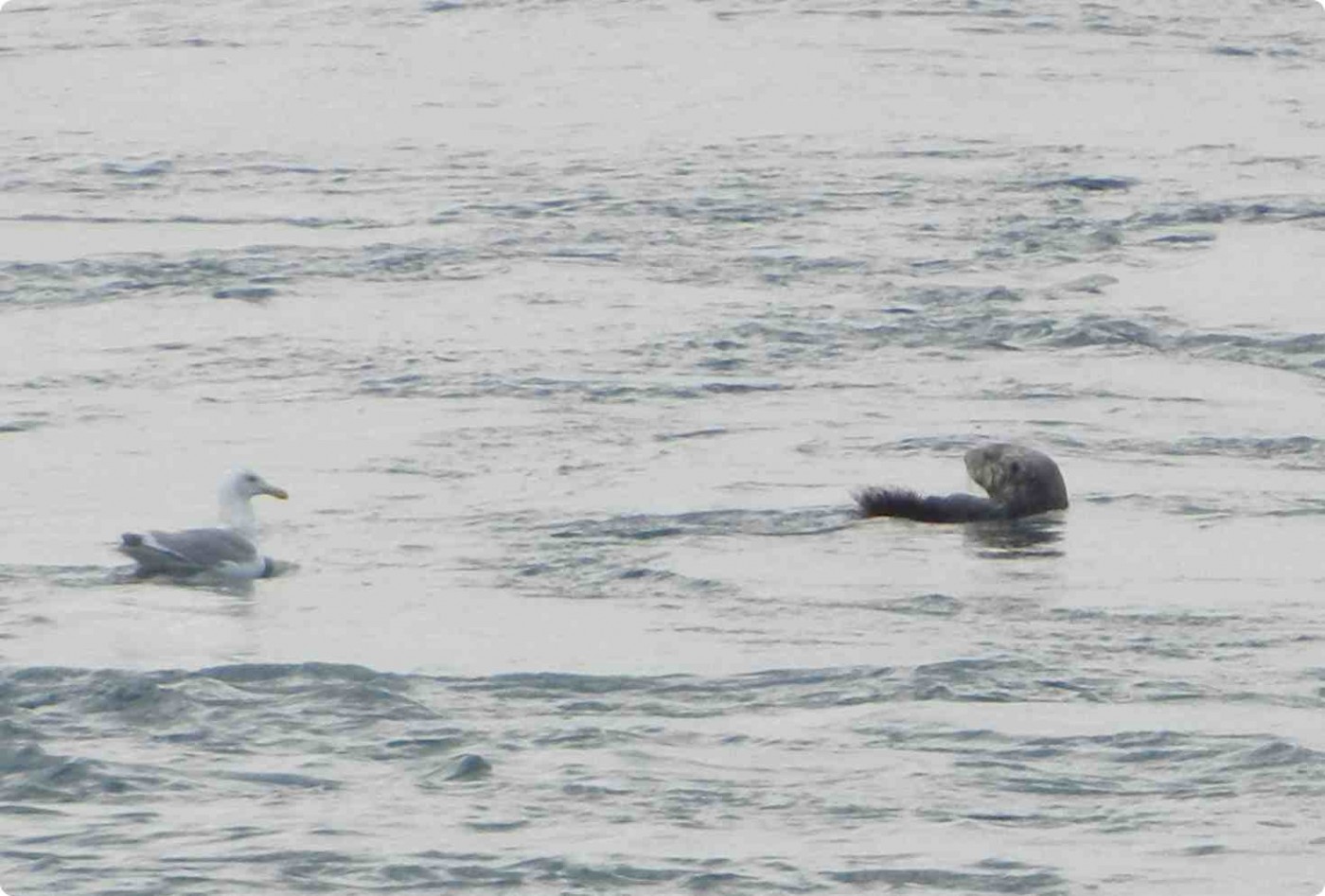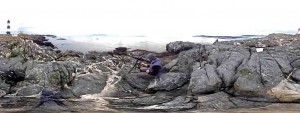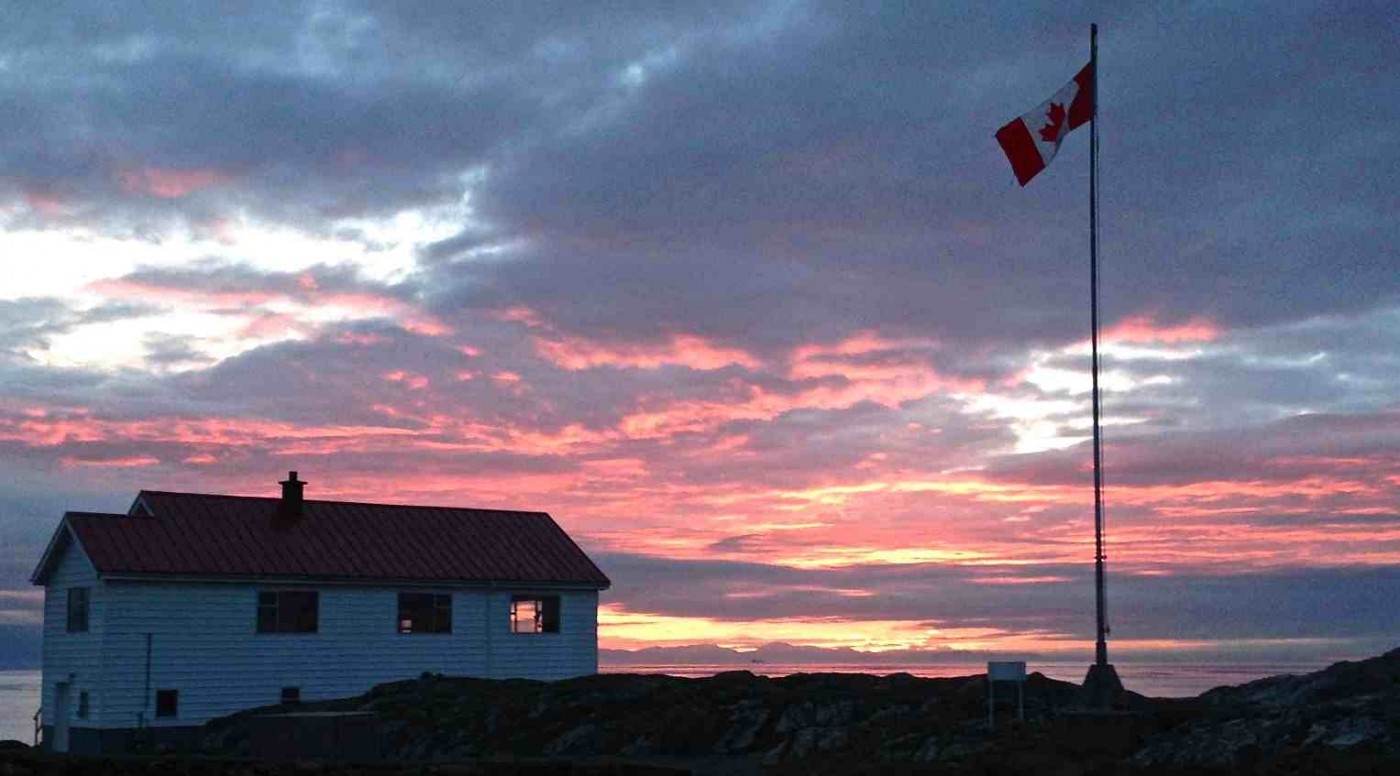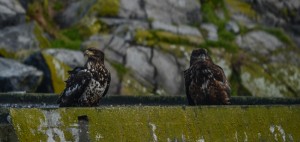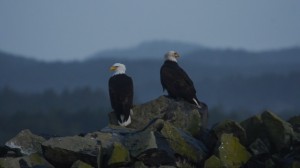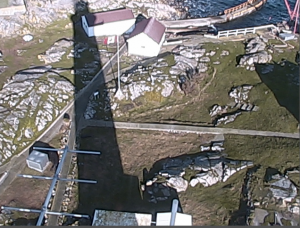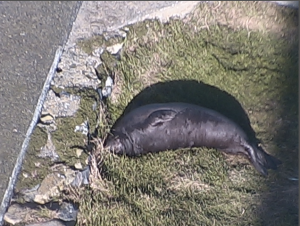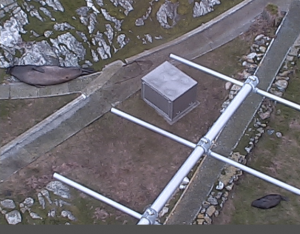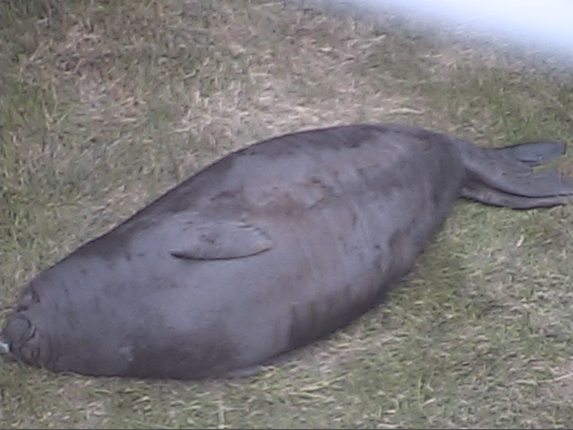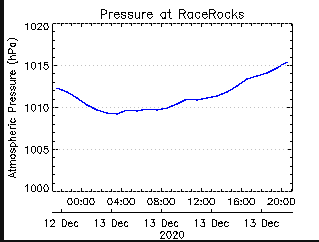 Click for Barometric pressure today at Race Rocks
Click for Barometric pressure today at Race Rocks
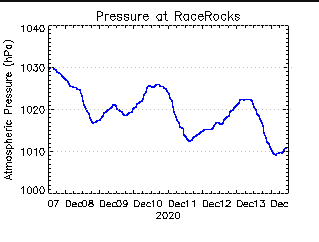 Click for Barometric Pressure for the past week
Click for Barometric Pressure for the past week
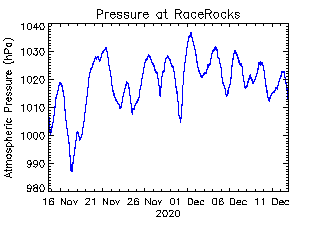 Click for Barometric pressure this past month
Click for Barometric pressure this past month
 See the barometric pressure, today, last week, last month on the weather page: Our weather instrument is at an elevation above sea-level of 6 meters.
See the barometric pressure, today, last week, last month on the weather page: Our weather instrument is at an elevation above sea-level of 6 meters.
The weight of the air that makes up our atmosphere exerts a pressure on the surface of the earth. This pressure is known as atmospheric pressure. Generally, the more air above an area, the higher the atmospheric pressure. This, in turn, means that atmospheric pressure changes with altitude. For example, atmospheric pressure is greater at sea-level than on a mountaintop.
To compensate for this difference in pressure at different elevations, and to facilitate comparison between locations with different altitudes, meteorologists adjust atmospheric pressure so that it reflects what the pressure would be if measured at sea-level. This adjusted pressure is known as barometric pressure. Our weather iinstrument measures atmospheric pressure. Barometric pressure changes with local weather conditions, making barometric pressure an important and useful weather forecasting tool. High pressure zones are generally associated with fair weather, while low pressure zones are generally associated with poor weather. For forecasting purposes, the absolute barometric pressure value is generally less important than the change in barometric pressure. In general, rising pressure indicates improving weather conditions, while falling pressure indicates deteriorating weather conditions. Our weather instrument samples the barometric pressure at the time of the archive and writes that value into the archive memory every 10 minutes.
It makes an interesting esercise and one can get a good understanding of negative correlations when comparing the records for wind speed and barometric pressure for several days or the past month
The affect of Barometric Pressure on Organisms at Race Rocks
Response of organisms to Barometric Pressure:
There is little quantitative evidence that the organisms of Race Rocks respond directly to changing barometric pressures. However, it is to be noted that most birds possess a sensory organ that does respond to changing pressure. An organ in the middle ear called the Vitali organ or the Paratympanic Organ detects pressure changes, warning them to take cover before a storm arrives. Birds will also interrupt migration when there is a hurricane approaching. It is also obvious that changes in wind patterns, so closely tied to changing barometric pressure, influence foraging patterns, social interactions and timing of activity. See this file for an example of a snow storm when there were no birds at Race Rocks. The overwintering populations of gulls and cormorants were back the next week.
Research Idea: Track barometric changes at Race Rocks, and do behavioural observations using the remote control camera. Try to find out if there is a correlation between a rapidly changing pressure and bird behaviour. Things to control for in your study:
Temperature and present wind conditions ( velocity and direction).
Research elsewhere has shown that Bats are the only mammals that respond to pressure changes, because they also have a Vitali organ. See the quote below: “BAT BAROMETERS SIGNAL MEAL TIME” By Sean Henahan, Access Excellence “CHAMPAIGN, Ill. –
Bats appear to use a built in barometer to determine the chances of a good nights bug hunting, according to a study by Ken Paige of the University of Illinois Institute for Environmental Studies. Paige spent nearly a year monitoring the dining habits of a colony of eastern pipistrelles, a cave-dwelling bat commonly seen in western Illinois. He found that the bats emerged in larger numbers when barometric pressures dropped and insects were numerous. He noted that the number of insects declined dramatically and that fewer bats left their roost when air pressure increased. Indeed, barometric pressure alone explained 87 percent of the variation in bat activity, he noted: “My research strongly suggests that the eastern pipistrelle uses barometric pressure as a cue for predicting the relative abundance of aerial insect prey outside their roost. Barometric pressure is the only physical environmental cue available to a bat roosting deep within a cave. All other variables such as light, temperature, relative humidity and wind currents are virtually constant. When air pressure is low, aerial insects are abundant, and bats respond by leaving the roost to forage.” The bats built-in barometer is likely to be its Vitali organ, a middle-ear receptor that is thought to help birds measure air pressure. Bats are the only mammals to have such a sensory organ. Paige’s bat-watching also showed that bats track barometric pressure metabolically. When the barometer fell, the bats slowed down their metabolisms, allowing them to conserve energy. By doing so, they can delay or eliminate the need for entering torpor, a sluggish state of dormancy that makes them susceptible to predators. In addition, the bats’ tracking of metabolic pressure may function as a bet-hedging strategy, he said “When pressure is low, insects are most abundant, except during heavy rain,” he said. “Because it is unlikely that bats can detect the rain from deep inside a cave, they have to fly out of the roost to check. This is no problem, however, because at low pressure they already are running on an economy setting and will waste minimal energy if they find their trip to the outside is a waste of time.” Because they already are conserving energy, he added, they can extend the benefit of their previous meal. Thus barometric-pressure tracking can be viewed as an alternative evolutionary strategy to torpor, he explained. This results of this research project appeared in the June issue of the British journal Functional Ecology.”.
Accessed January 2014: at: http://www.accessexcellence.org/WN/SUA06/batsense.html

